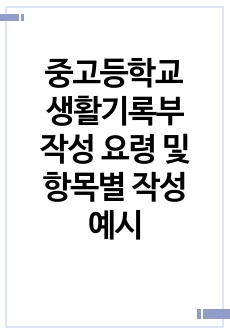* 본 문서는 배포용으로 복사 및 편집이 불가합니다.
서지정보
ㆍ발행기관 : 서울대학교 기술과법센터
ㆍ수록지정보 : LAW & TECHNOLOGY / 4권 / 5호
ㆍ저자명 : 우성엽
ㆍ저자명 : 우성엽
목차
I. 서론II. 2차적저작물 작성권에 관한 각국의 입법례
III. 2차적저작물 작성권의 이론적 근거
IV. 저작권법상 2차적저작물의 요건
V. 2차적저작물과의 비교개념
VI. 복제권과 2차적저작물 작성권의 비교
VII. 2차적저작물의 실질적 유사성 판단
VIII. 2차적저작물과 저작인격권과의 관계
IX. 2차적저작물 관련 권리행사
X. 결론
한국어 초록
2차적저작물 작성권은 복제권과 함께 저작권 침해사건에 있어서 핵심을 이루는 중요한 권리로서, 위 권리는 원저작물을 기초로 하되 그와 동일한 또는 실질적으로 동일한 저작물을 작성하는 행위를 넘어서 동일하지는 않지만 실질적으로 유사하면서도 새로운 창작성을 가미한 저작물을 작성하는 행위를 통제할 수 있는 근거가 되는 권리이다. 2차적저작물 작성권을 인정하는 이론적 근거로는 경제학적 이론, 노동보상 이론, 자아계발 이론 등이 주장되고 있으나, 2차적저작물 작성권이 원저작자의 기대 수익의 증가 및 기대수익의 확실성이라는 장점을 통해 저작물을 창작할 인센티브를 증가시킨다는 점이 가장 유명하고, 강력한 이론적 근거로 제시되고 있다. 2차적저작물 작성권에 관한 각 국가들의 입법례는 서로 유사한 면이 많기는 하나 동일하지는 않다. 예를 들어, 한국의 경우 무단으로 작성된 2차적 저작물이라고 하더라도 새로이 부가된 창작적 표현에 대한 저작권 자체는 보호되지만 원저작물의 이용∙저촉관계는 별개의 문제로 다루고 있고, 미국의 경우 무단으로 작성된 2차적저작물에 새로운 창작적인 표현이 부가되더라도 이에 대한 별도의 저작권보호를 하지 않으며, 일본의 경우 원저작자에게 2차적저작물의 저작자와 동일한 권리를 부여하는 방식으로 규정하여, 2차적저작물에 대하여 그 ‘작성권’과‘이용권’을 분리하여 별도로 규정하는 체계를 취하고 있다. 저작권법 제5조의 2차적저작물의 정의 규정 및 대법원 판결의 2차적저작물에 관한 판시내용에 비추어, 2차적저작물의 성립요건으로서는 아래와 같이, (i) 원저작물을 기초로 하되, (ii) 원저작물과의 실질적 유사성을 유지하고, (iii) 이것에 사회통념상 새로운 저작물이 될 수 있을 정도의 수정증감을 가하여 원저작물과 구별되는 새로운 창작성을 부가하여야 하는 것이라고 할 수 있다. 그러나, 원저작자로부터 2차적저작물 작성에 관해 동의나 허락을 받지 않더라도 원저작자에 대한 관계에서 저작권침해로 되는 것은 별문제로 하고 저작권법상 2차적저작물로서 보호된다. 2차적저작물이“원저작물의 이용부분”과“새로운 창작성 또는 창작적인 표현의 부가부분”으로 구성된다고 보는 경우에, 어떠한 2차적 저작자가 원저작물을 기초로 무단으로 2차적저작물을 작성하는 경우 원저작권자의“2차적저작물 작성권의 침해”이외에“원저작물의 이용부분”에 관해서 원저작권자의“복제권”의 침해도 별도로 성립한다고 볼 수 있는지 여부가 문제된다. 이에 대해서는 동일성(또는 실질적 동일성)의 경우에는 복제권의 침해만이 문제되고, 실질적인 개변을 통해 사회통념상 새로운 저작물이 될 수 있을 정도의 새로운 창작성이 부가되었지만 여전히 원저작물과 실질적으로 유사한 경우에는 2차적저작물 작성권 침해만이 문제된다고 하여 유사성의 정도에 따라 두 권리가 서로 배타적으로 적용되는 것으로 보는 견해가 있으나, 2차적저작물 작성권 침해가 인정되는 경우, 2차적 저작자에게 복제권의 이용허락이 부여되어 있지 않는 한, 원칙적으로 복제권의 침해도 중복적으로 성립될 수도 있다고 생각된다.영어 초록
The right to prepare derivative works, as well as the reproduction right, is the core right in relation to the copyright infringement action and can be the legal basis to control certain activities making derivative works which are substantially similar but not identical to the preexisting works and contain new creative expressions, beyond making the works which are identical or virtually identical to the preexisting works. In this regard, the economic theory, labor-desert theory and personality theory, etc. are presented to support the right to prepare derivative works. Among them, the most popular and strongest argument is that the derivative works right can increase and secure an original author’s expected profits and thus increase incentives for the original author to create more copyrighted works. Legislations of many countries regarding the derivative works right have many similar aspects and features, but are not identical to each other. For example, under the Korean Copyright Law, even the unauthorized derivative work can enjoy the copyright protection for the newly added creative expression by the author of such work, but the use and incorporation of the preexisting works in the derivative works should be treated as separate matter in relation to the infringement on the preexisting works. Under the U. S. Copyright Act, if a derivative work is prepared based on a preexisting material and such material has been used unlawfully, even the creative expressions added in the derivative work cannot enjoy copyright protection. Under the Japanese Copyright Act, an original author is granted the same copyright which an author of a derivative work has over her derivative work, and the right to prepare derivative works and the right to use such derivative works are provided and treated separately. According to the Article 5 (Derivative Works) of the Copyright Law and the Supreme Court’s decision, the elements of a derivative work are as follows: (i) Based on the preexisting work, a derivative work must (ii) maintain substantial similarity with the preexisting work and (iii) contain sufficient creative expression and be different enough from the preexisting work, with changes and additions to the preexisting works to be regarded as a“ new work”from the perspective of the ordinary person in the society. However, obtaining consent or permission from the original author to prepare the derivative work is not an element or requirement for the derivative work (i.e., its own creative expression) to be protected as copyrightable works in relation to the third parties, while such activity can be regarded as an infringement of the right to make derivative works in relation to the original author. A derivative work is composed of“ use of preexisting works”and“ addition of originality or creative expressions.”In such case, if a party prepares a derivative work based on a preexisting work without authorization, there is a question on whether the activity of“ using the preexisting work”in preparing the derivative work could constitute an infringement of the reproduction right, while the“ substantial variation” of the preexisting work could constitute the infringement of the right to prepare derivative works. In this regard, there is a view that the reproduction right and the right to prepare derivative works are mutually exclusive. According to this view, it seems that if two works are identical (virtually identical) to each other without addition of new expression, only the reproduction right can be infringed and if the derivative work keeps substantial similarity even after substantial variation and addition of new creative expression to the preexisting work, only the right to prepare derivative works can be infringed. However, if certain activity constitutes an infringement of the right to prepare derivative works, such activity could infringe the reproduction right as well, unless the original author granted to the author of the derivative work a license or permission to reproduce the original work.참고 자료
없음이 자료와 함께 구매한 자료
 학습조직과 HRD 13페이지
학습조직과 HRD 13페이지 저작권 -2차저작물- [사례중심 A+리포트] 7페이지
저작권 -2차저작물- [사례중심 A+리포트] 7페이지

























